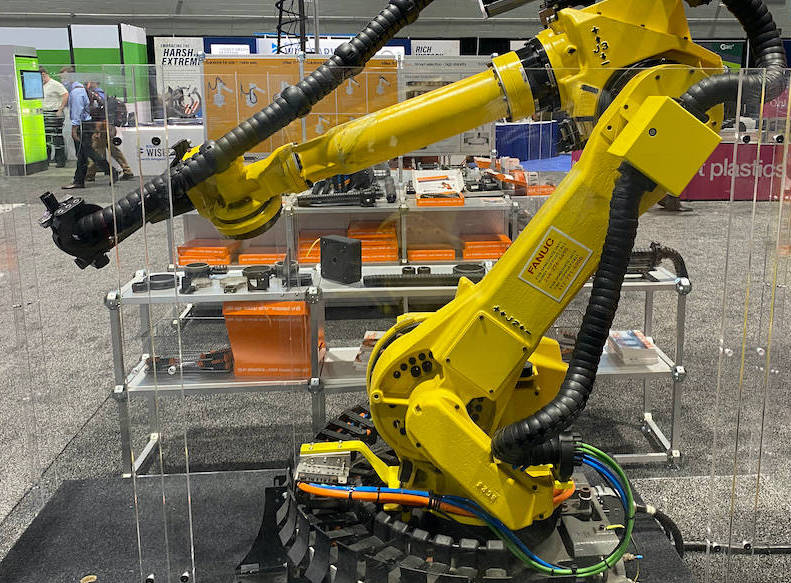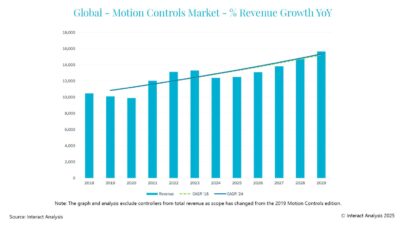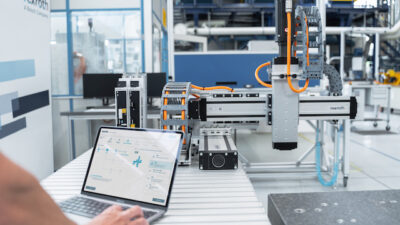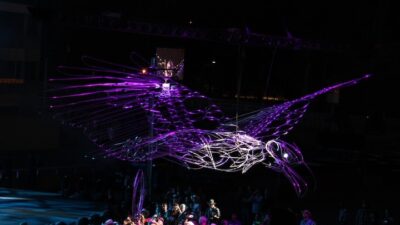Integrating a single, motion-centric coordinator to control a machine and robots can provide advantages in development time, cost and performance compared to separating PLC and robot control functions.

The growing use of robotics in manufacturing and process applications means that selective compliance assembly robot arm (SCARA), delta and cartesian robots are now commonplace in many pick-and-place applications. As the technology spreads, a key challenge is how to combine robot and machine control.
When a machine builder or end user plans to add robotics, third-party robot procurement is the typical approach. Most programmable logic controllers (PLCs) don’t include integrated robotic control so engineers have to establish an interface method between the robot controller and the PLC. As the robot path planner is separate to the PLC, this can present a communication challenge that increases the time and cost of development.
This challenge is exacerbated because for many PLC engineers, a robot controller is seen as an untouchable black box. A common way to resolve the issue of having two separate systems is to involve both robot and PLC specialists. As the cost of hiring internal expertise is prohibitive, end users might rely on a robot provider for commissioning and support. This results in a less flexible machine as production changes are more challenging to implement and it also places responsibility for field maintenance in the hands of the robot vendor.
To interface a PLC with a robot controller, additional hardware is also required. The most obvious cost are the controllers themselves and if a machine includes multiple SCARA robots, the application requires a PLC plus a robot controller for each robot. Extra hardware such as an encoder is also generally needed for a PLC and a robot controller to synchronize. As it’s cost prohibitive to hold spares for the separate hardware, most OEMs or end-users are also likely to put reliance on spares and replacement with the robot vendor, accepting the risk in extended downtime.
An alternative approach is to use a single controller that provides logic-based machine control as well control for multiple robots. This can be achieved with a motion-centric machine controller that includes robotic kinematic control as well as IEC programming of logic functions, plus I/O extensions. The basis of coordinated motion control includes the synchronization of multiple servo or stepper axes in many dimensions and these characteristics, combined with kinematic transforms, are also central to robotic control. If a robot programming language with robot-specific functions is also integrated, this makes motion controllers capable of simultaneously controlling a machine with integrated robots.
Single controller advantages
The advantage of a single controller is that the machine cycle, all machine axes and robots are coordinated by the same controller. This eliminates the potential of any communication issues, speeding up development time and removing challenges that cause downtime in the field. In addition to improving long-term reliability, this approach also simplifies adaption of the system when production changes are needed.
An alternative to a single controller is PC-based technology. However, there’s a distinct cost contrast between, say, a processor and a dedicated motion controller that uses the equivalent of a powerful mobile phone processor.
While some applications will benefit from a dedicated robot controller, for many SCARA, delta and cartesian robot applications, integrating a motion-centric controller that can capably handle machine, motion axes and robots will be advantageous. Time can be saved in development, overall machine cost can be reduced and most importantly, control integration can provide more productive, more reliable machines.
– This originally appeared on Control Engineering Europe’s website. Edited by Chris Vavra, web content manager, Control Engineering, CFE Media and Technology, [email protected].



